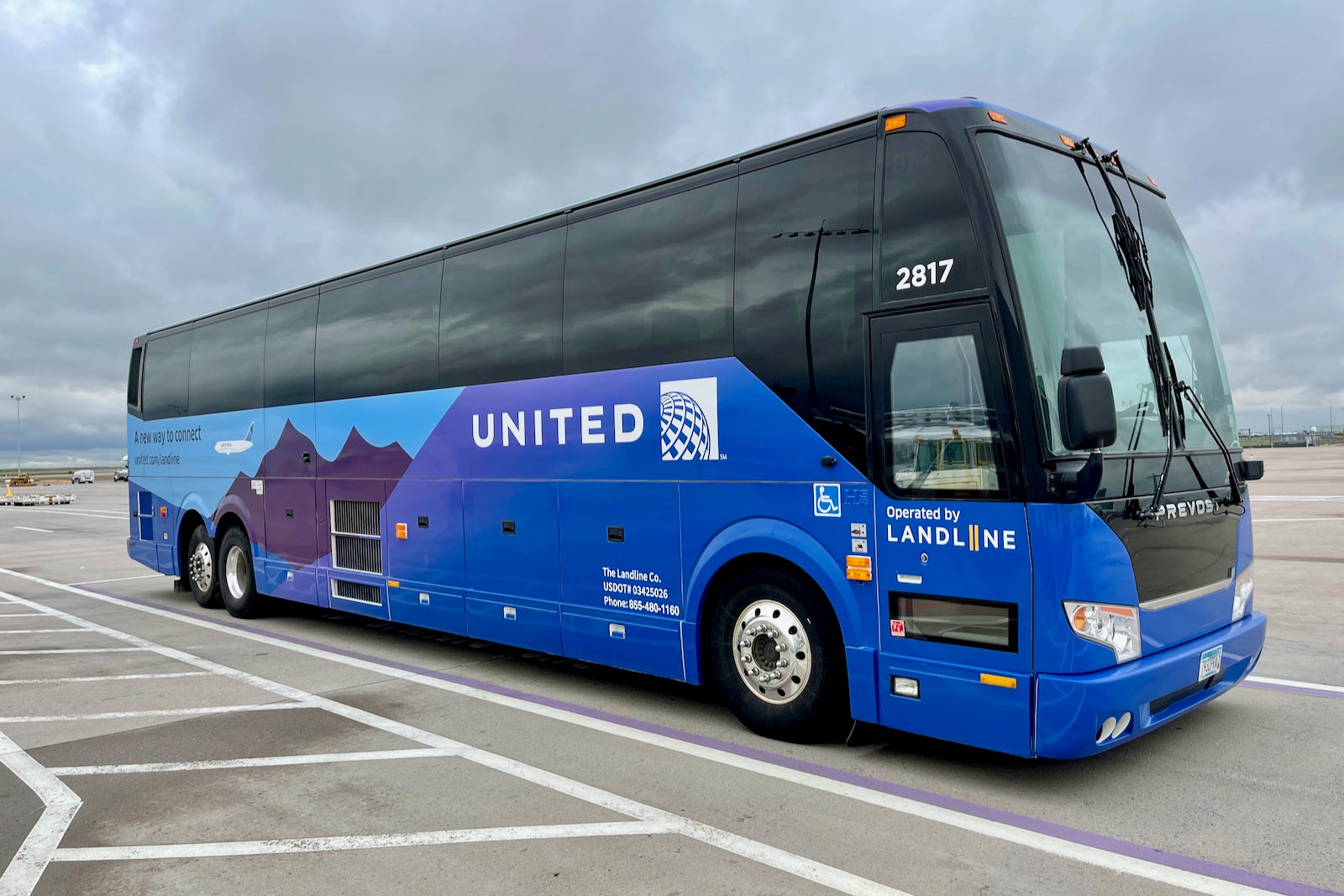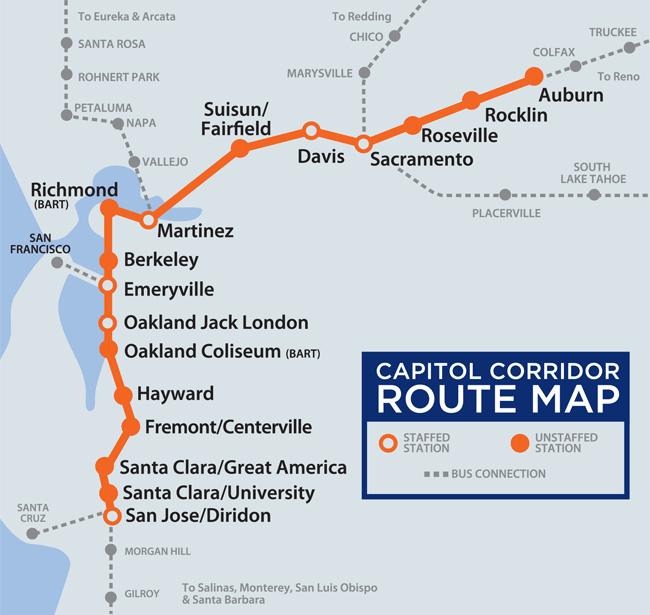Looks like the Grey Dog is finished up north. Transportation options dwindle. Could it happen here too?
You are using an out of date browser. It may not display this or other websites correctly.
You should upgrade or use an alternative browser.
You should upgrade or use an alternative browser.
Greyhound Quits Canada
- Thread starter Passport1
- Start date
im no fan of united airlines, but here is an imaginative way forward for long distance bus operations: seamlessly integrate bus into air travel. move long distance bus terminals away from depressed, dangerous, dirty locales to airports. deep-clean and secure buses and their terminals. ensure proper oversight of bus operators and maintainers. in short, match air to bus connections and make bus travel more like the better aspects of air travel, as united airlines has done in colorado.

 thepointsguy.com
thepointsguy.com

Review: United’s brand-new bus service between Denver and Breckenridge - The Points Guy
Review of United Airlines' new partnership with bus operator Landline that offers one-stop shuttle service to two Colorado destinations, Fort Collins and Breckenridge.
The customer base of Greyhound is getting lower and lower income, I don't think it would be a sustainable business unless you run it as a social service.
I don't see it disappear overnight but it would likely reduce many services from a few times a day to maybe once a week. If you want it faster you would have to either fly or drive.
I don't see it disappear overnight but it would likely reduce many services from a few times a day to maybe once a week. If you want it faster you would have to either fly or drive.
im no fan of united airlines, but here is an imaginative way forward for long distance bus operations: seamlessly integrate bus into air travel. move long distance bus terminals away from depressed, dangerous, dirty locales to airports. deep-clean and secure buses and their terminals. ensure proper oversight of bus operators and maintainers. in short, match air to bus connections and make bus travel more like the better aspects of air travel, as united airlines has done in colorado.

Review: United’s brand-new bus service between Denver and Breckenridge - The Points Guy
Review of United Airlines' new partnership with bus operator Landline that offers one-stop shuttle service to two Colorado destinations, Fort Collins and Breckenridge.thepointsguy.com
Their major customer base is in the depressed, dangerous, dirty locales.
I remember the killing to Tim McLean by Vince Li. That's been cited as one reason why there's been less business - at least in Saskatchewan.

 globalnews.ca
globalnews.ca

Greyhound bus beheading in 2008 cited for drop in ridership | Globalnews.ca
A Saskatchewan official says a beheading on a Greyhound bus in Manitoba 10 years ago was the beginning of a steep decline in bus ridership in his province.
I recall frequently riding the Greyhound as a kid with my parents. It was a great, stress-free way to travel.
I also rode with "STC" (Saskatchewan Transportation Company) as well. Both were comfy and secure at a time when our family car didn't have a/c.
Mind you, this was about 30-35 years ago when riding the bus on long distance trips was relatively common for folks from any socioeconomic background.
Taking the bus was akin to when Westjet became the main competitor to Air Canada. Everyone took the bus and there was no shame in doing so....not like in later years

I also rode with "STC" (Saskatchewan Transportation Company) as well. Both were comfy and secure at a time when our family car didn't have a/c.
Mind you, this was about 30-35 years ago when riding the bus on long distance trips was relatively common for folks from any socioeconomic background.
Taking the bus was akin to when Westjet became the main competitor to Air Canada. Everyone took the bus and there was no shame in doing so....not like in later years
Practically speaking, we don't have train travel anymore in Canada. I've been on very long train trips in Canada (3 day trips a number of times) as late as 1965 when trains were the usual way that people traveled long distances - and it wasn't that great.
In a huge country like Canada flying is the only practical option for the long intercity segments. But buses serve a practical need - short distance travel between small towns. If buses had been integrated with air travel there would have been a fast and practical way to get from anywhere to anywhere.
Losing buses will be a blow for that segment of the population that doesn't drive and lives in small town Canada.
In a huge country like Canada flying is the only practical option for the long intercity segments. But buses serve a practical need - short distance travel between small towns. If buses had been integrated with air travel there would have been a fast and practical way to get from anywhere to anywhere.
Losing buses will be a blow for that segment of the population that doesn't drive and lives in small town Canada.
Practically speaking, we don't have train travel anymore in Canada. I've been on very long train trips in Canada (3 day trips a number of times) as late as 1965 when trains were the usual way that people traveled long distances - and it wasn't that great.
In a huge country like Canada flying is the only practical option for the long intercity segments. But buses serve a practical need - short distance travel between small towns. If buses had been integrated with air travel there would have been a fast and practical way to get from anywhere to anywhere.
Losing buses will be a blow for that segment of the population that doesn't drive and lives in small town Canada.
Isn't Via still subsidized?
In the US, Amtrak uses a series of buses to extend the reach of train travel. At least around the San Francisco Bay Area, they use dedicated buses to take passengers to San Francisco where they don't operate train service.
I remember getting a hood for a 1970 'cuda off of the Greyhound back in the late 1980's. It cost like $75 shipping from Texas to Tacoma. Quite the bargain and it didn't sustain any damage either. Two days I think. I didn't mind dodging the drug dealers and hookers as long as it was daytime. Tacoma was infested with Crips and Bloods back in the day. Not anymore, gentrified.
In Small to Medium sized cities in the US we usually have private company run airport shuttles. We also have some ethnic community with their own "China Town / Saigon Buses" going point to point without airport involved.
Then we have people asking friends and families for rides, "Limo" companies, rental cars, etc. The worst case scenario of people getting stuck is real, but the typical regular demand for a regularly scheduled services is not there for Greyhound.
As a comparison, Greyhound would take 11 hours between San Jose to Santa Ana in California. The Vietnamese bus typically takes 7, and is cheaper. The only thing you have to tolerate is the Karaoke MTV onboard.
For shorter distance like within San Francisco Bay Area we have local buses for commuters, like SamTrans, AC Transits, VTA, etc etc. It is for commuters, not airporters. We also have those TechBus that big companies run for their employees.
Then we have people asking friends and families for rides, "Limo" companies, rental cars, etc. The worst case scenario of people getting stuck is real, but the typical regular demand for a regularly scheduled services is not there for Greyhound.
As a comparison, Greyhound would take 11 hours between San Jose to Santa Ana in California. The Vietnamese bus typically takes 7, and is cheaper. The only thing you have to tolerate is the Karaoke MTV onboard.
For shorter distance like within San Francisco Bay Area we have local buses for commuters, like SamTrans, AC Transits, VTA, etc etc. It is for commuters, not airporters. We also have those TechBus that big companies run for their employees.
Last edited:
My most recent Greyhound memory is from a LONG time ago (1988) when the Coast Guard bussed me from Gillette, WY to Butte, MT to start the enlistment process. That trip took FOREVER because they stopped in every podunk town in between. I found myself wishing I'd just driven when it came time to make the return trip, and I vowed never again when I stepped off the bus in Gillette. I feel blessed that I don't ride them out of necessity.
How do you pay the bills with fares like this? Boston to Philadelphia $20.50, Los Angeles to Las Vegas $25-$30
Bus schedules and rates.
Bus schedules and rates.
There is still a VIA rail service between Vancouver and Toronto (with stops in Edmonton and Winnipeg), and commuter trains in the Toronto Montreal corridor. So you can still take a train to a few places in Canada. But I wouldn't call it a rail passenger system. One really annoying thing is that passenger trains are not the priority and frequently have to wait on a siding here and there and wait for freight trains to pass.Isn't Via still subsidized?
If you want to get somewhere in Canada in a reasonable amount of time you fly or drive.
The greyhound terminal in San Antonio is downtown, lets just say it is not a place you want to be. It attracts lots of strange people, but its a few blocks away from the River Walk.
The San Antonio city bus station main hub looks like Skid Row in California, and it is a reasonably new facility.
I guess low fares and transients are the problem.
Mega bus doesn't even use the main hub, they load passengers out of their own gated parking lot with barb wire around it.
The San Antonio city bus station main hub looks like Skid Row in California, and it is a reasonably new facility.
I guess low fares and transients are the problem.
Mega bus doesn't even use the main hub, they load passengers out of their own gated parking lot with barb wire around it.
The customer base of Greyhound is getting lower and lower income, I don't think it would be a sustainable business unless you run it as a social service.
I don't see it disappear overnight but it would likely reduce many services from a few times a day to maybe once a week. If you want it faster you would have to either fly or drive.
Ive heard some people call it the Crack Hound....
For shorter distance like within San Francisco Bay Area we have local buses for commuters, like SamTrans, AC Transits, VTA, etc etc. It is for commuters, not airporters. We also have those TechBus that big companies run for their employees.
However, there are other forms of transportation for commuters. AC Transit runs transbay buses. There's also public transportation linked to all three major airports. OAK is served by AC Transit the BART connector, although I was never a fan. The cheaper bus worked pretty well. SFO now has a direct connection to BART (I've been hearing about doing that since the 70s) and bus service. SJC has the free VTA 10 bus.
There are other commute methods in the Bay Area like Amtrak California, Altamont Corridor Express, and Caltrain. Amtrak California also subsidizes bus connectors along the Capitol Corridor route.

The only weird caveat is that one is required to book a train portion with the bus portion. The only exception is bus service to Lake Tahoe. It's really weird because it's subsidized by the state, but the exception is written in because nobody else provides bus service to Lake Tahoe. Bus companies like Greyhound fought for the restriction because otherwise they would be competing with subsidized bus service.
Ugh. I saw that coming years ago while driving for New Jersey Transit out of Penn station Newark. Watching the Greyhouder pull up to a line of people with 2,000 lbs of luggage and assorted crap while I boarded a dozen commuter suits bound for their express run home to South Jersey. The destination sign on the Greyhound said Charlotte or Lexington whatever. I would have had to kill myself before doing that.The customer base of Greyhound is getting lower and lower income, I don't think it would be a sustainable business unless you run it as a social service.
I don't see it disappear overnight but it would likely reduce many services from a few times a day to maybe once a week. If you want it faster you would have to either fly or drive.
Last edited:
I see tons of new entries in the bus market. To me that, more than people not riding the bus, is the reason for the decline in Greyhound. I know very well off people who have taken the Megabus intercity in Texas because it's much less stressful than driving, and flying has gotten more expensive.
We really need a high speed rail link from Quebec City to Toronto.Practically speaking, we don't have train travel anymore in Canada. I've been on very long train trips in Canada (3 day trips a number of times) as late as 1965 when trains were the usual way that people traveled long distances - and it wasn't that great.
In a huge country like Canada flying is the only practical option for the long intercity segments. But buses serve a practical need - short distance travel between small towns. If buses had been integrated with air travel there would have been a fast and practical way to get from anywhere to anywhere.
Losing buses will be a blow for that segment of the population that doesn't drive and lives in small town Canada.
We really need a high speed rail link from Quebec City to Toronto.
Make it from Quebec City to Windsor and I'm on board (pardon the pun).
Similar threads
- Replies
- 33
- Views
- 927
- Replies
- 44
- Views
- 2K
- Locked
- Replies
- 33
- Views
- 1K
- Replies
- 19
- Views
- 836
